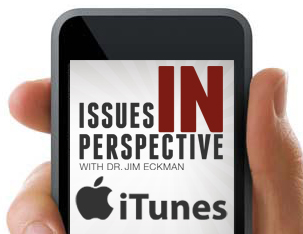Worker Shortage, The American Economy And Immigration
Feb 22nd, 2025 | By Dr. Jim Eckman | Category: Featured Issues, Politics & Current EventsThe mission of Issues in Perspective is to provide thoughtful, historical and biblically-centered perspectives on current ethical and cultural issues.

President Trump had made immigration a major aspect of his presidential campaign and now a policy goal of his presidency. Few would disagree with his commitment to end illegal immigration. Few would doubt that dealing with illegal immigrants already in the country must be addressed. But, solving these challenges must be balanced with the reality of a serious worker shortage in the US. In this Perspective, I hope to review the issue of the worker shortage facing the US along with the volatile issue of immigration.
Let me begin by summarizing a report from Greg Ip of the Wall Street Journal. He addresses the acute worker shortage in the ship-making industry: “The Navy wants more ships, but shipyards face dire shortages of labor amid rising pay for less demanding fields . . . Jennifer Boykin, president of Newport News Shipbuilding, said the operation here loses 20% of its hourly craft workers each year to attrition — retirement, quits, dismissals—compared with 10% before the pandemic. Newport News Shipbuilding, a unit of Huntington Ingalls Industries, and General Dynamics’ Electric Boat unit based in Groton, Conn., jointly build attack submarines (used mainly against others ships) and ballistic missile submarines (part of the nuclear deterrent). Labor shortages are now a national-security problem. They are a key reason numerous navy programs are behind schedule and over budget. The Navy had originally budgeted $15 billion for three Virginia-class attack subs in fiscal 2024 and 2025. The Biden administration has just asked Congress for an additional $3.4 billion, plus $1.6 billion for a ballistic missile submarine. The USS Arkansas, a Virginia-class sub, is expected to join the fleet in 2026, three years late.”
Ip goes on: “The shipbuilding program’s problems are endemic to the U.S. industrial base. As manufacturing moved offshore and capital and labor migrated to more lucrative fields, the associated managerial know-how and skilled labor have atrophied. That now looks like a threat to U.S. economic and military security as China’s industrial prowess and strategic threat have grown. In the past three years, China has built 47% of all the world’s ships, and the U.S. just 0.1%, according to United Nations data. China’s shipyards build both commercial and military vessels, a significant strategic advantage. From 2014 to 2023, China’s navy launched 157 ships while the U.S. launched 67, according to independent defense analyst Tom Shugart . . . The demand signal for warships faded after the Cold War ended. Submarine production slumped from 3.8 a year in the 1980s to 0.7 in the 1990s, according to Eric Labs, a navy analyst at the Congressional Budget Office. It flickered to life again in the 2000s amid China’s growing threat and the need to replace aging ships. Warship tonnage under construction went from 68,000 in 2014 to 123,000 this year, Labs estimates. Under the Navy’s latest plan, that would reach 167,000 in 2034. But shipyards will struggle to meet that goal. Since 2019, the Navy has planned on three subs (two attack, one ballistic) a year, but actual production has been just half that, Labs estimates. Chris Kastner, chief executive of HII, is enthusiastic about the potential of additive manufacturing (or ‘3-D printing’) to produce bespoke components in a fraction of the time and cost of traditional manufacturing, but the Navy’s stringent approval process slows implementation.”
Second, consider the influx of immigrants during the Biden administration. Donald L. Luskin, CEO of Trend Macro, observes that “. . . the uncontrolled influx of immigrants into the U.S. across the southern border [is] a catastrophe of lawlessness and maladministration. But it appears to have contributed to a strong labor market and to economic growth. Consider the 3.2 million increase in the foreign-born adult population in the U.S. in the 21 months since July 2022. We start at that date because it gives us a clean slate, free from the effects of the pandemic lockdown and reopening. And this period captures the full effect of the Biden administration’s loose border policies. Over that period, foreign-born employment has increased 1.8 million—meaning that roughly 56% of the 3.2 million new foreign-born adult population became employed. Setting aside the political matter of how much of this employment is legal, the stereotype that immigrants don’t or can’t work appears to be false . . . Even undercounted, the foreign-born represent 80% of the 4.1 million U.S. adult population increase since July 2022, and they account for 71% of the 2.5 million new jobs. All else equal, without the new foreign-born workers, total job growth in the economy would have been about 86,000 less every month—only 724,000 over the period, not 2.52 million. Considering that population and employment growth are the most important variables in economic growth, it would seem that without the present immigration surge the economy would have grown less than a third as much as it actually has in a series of strong quarters since July 2022, across which annual real GDP growth averaged 2.8%—compared with the Federal Reserve’s estimate of growth potential at only 1.8%. That wouldn’t be true if the new immigrants were parasitically taking jobs that the native-born would have gotten otherwise. Since July 2022, the native-born adult population grew by 821,000, and its employment grew by 724,000, which is to say that 88% of them found jobs. It would seem that the problem for new native-born adults is that there are so few of them, not that they can’t get work.” Luskin also makes the following clarifications:
- “It is likely the case that the new foreign-born adults are diluting the productivity of the U.S. economy by arriving with few skills and with language and education deficits. But the economy needs many low-skill workers, and they rapidly acquire skills on the job, so they will surely contribute to productivity growth in the future.”
- “Yes, new immigrants put incremental demands on roads, hospitals, schools and other resources. But so do new native-born citizens. For either population, the question is what they produce as well as what they consume. The evidence shows that the foreign born are more likely to be producers than the native-born. In total, the foreign-born employment-to-population ratio is 63.4%. For the native-born, it is only 59.6%. By hook or by crook, legal or illegal, new immigrants are working.”
- “Under capitalism, economic growth depends on trust—on the ability of economic participants to rely on others’ adherence to a set of defined and stable rules. The ad hoc lawlessness of the Biden border policy undermine[d] that, and unless it can be stabilized it will be corrosive to long-term growth prospects. On the other hand, a border crackdown such as Donald Trump has proposed could end up leading to slower growth [and he] will need to take great care in balancing these urgent interests.”
Third, in the new Trump administration, there is a remarkable accommodation between the tech companies (e.g., Elon Musk, Jeff Bezos, and Mark Zuckerberg) and the Trump administration. But, as The Economist recently warned, “Like the rest of Mr. Trump’s team, the techies want to sharpen America’s economic and technological edge by cutting red tape and boosting innovation. Bringing in experts to advise on AI is a good idea, given its likely economic and strategic importance. And everyone knows that government could be made more efficient. Achieving all this in practice is another thing, though. One problem is that, when tech and MAGA say they are signed up to America First, they mean different things. Whereas the MAGA movement hopes to restore a vision of the past, including an impossible return to a manufacturing heyday, tech looks forward. It wants to accelerate progress and disrupt society, leaving the world for which MAGA yearns ever farther in the dust. These contrasting visions will translate into policy disputes. MAGA fears that immigrants take jobs that Americans should be doing; tech wants the best talent regardless of nationality. Tech has a libertarian bent that is suspicious of government; MAGA loathes corporate power. Both groups see China as a rival (apart from Mr. Musk, for whom it is a place to make and sell cars). But whereas MAGA thinks that foreigners exploit trade to cheat America, tech has benefited from flows of talent, capital and custom.”
President Trump will not be able to carry through his threat to deport 15 million people. “Shipping out such a huge number would be extraordinarily expensive and would shock the labor market, raising the prices of goods and services that illegal immigrants help provide. Research suggests that deportations under President Obama slowed housebuilding by throwing out so many plasterers and bricklayers. And mass expulsions would be unpopular, because over half of all irregular migrants have been in America for more than a decade. They have jobs and families, and often live in blue states that will not co-operate.”
Finally, a few thoughts on immigration as a Christian. There is little doubt that politics and economics frame the immigration debate. Two biblical mandates, instead, should also inform our thinking as Christians—the Great Commission and the Great Commandment. Dr. Alex Mindes, National Director of Hispanic Ministry and Gateway Theological Training of the Evangelical Free Church of America, asks that we view the nearly 18 million undocumented people living in America as an opportunity: “Many of these people are outside of their home in countries, separated from their families, and outside of their own governments’ systems. They are prime for the gospel.”
Three fundamental parameters are dictated to us by Scripture: (1) All immigrants, even those who are illegal, are made in the image of God and of infinite worth and value. (2) Both the Great Commission and the Great Commandment inform our approach to illegals. (3) The Apostle Paul walked a fine line between compassion and the execution of the law. [The best example of Paul’s demeanor is in the book of Philemon. Onesimus, the slave, was running away from his master. Paul discipled him and then eventually sent him back to his master. But he told Philemon, the master, to treat Onesimus as his brother and that Paul would pay any of his debts.] Dr. Michael Pocock, Chairman and Senior Professor of World Missions at Dallas Theological Seminary, offers three key points that enable us to maintain a biblical perspective on immigrants:
- Because all people are in God’s image, immigrants should be treated with dignity, even if they attempt to circumvent the law. They must be held accountable but at the same time the state should do everything it can to prosecute abusive employers who also are breaking the law.
- The Old Testament helps us see that God makes provision for alien and poor workers, exemplified in the case of Ruth and Boaz. Boaz permits an alien, Ruth from Moab, to glean in his fields and offered her protection from his own male workers as well as safety, respect, water, and shelter.
- National governments are basically units of government established by God to accomplish His purposes. Rule of law must be respected and government has the obligation to establish policies for the well-being of its people—and this includes laws that establish a reasonable and manageable flow of immigrants into its nation. Somehow, Christians must find a way to embrace a policy that reflects understanding, compassion and respect for immigrants, while at the same time urging respect and honor to government and its laws. Pocock writes that “Christ’s immigration policy would stress ministry to migrants and also the responsibility and privilege of Christian migrants to spread the gospel wherever they are.”
Finally, the Bible makes it clear that many biblical persons were in fact immigrants at some point in their lives: Abraham; Isaac; Jacob; Joseph; Moses; Elimelech, Naomi and her sons; Ruth; David; Joseph, Mary and Jesus; Aquila and Priscilla; and Jewish Christians fleeing persecution. Pocock concludes: “Whether it is hospitality to strangers (Rom. 12:13), or entertaining those who cannot repay (Luke 14:12-14), doing good to all persons ( Gal. 6:10), or considering all people equally no matter their culture or ethnicity (Col. 3:10-11), the Bible speaks to our attitude toward those of other races or cultures.” The church should lead the way in finding the balance between treating immigrants with dignity and obedience to the rule of law. Compassion mixed with respect for law must be realized in the church.
See Greg Ip in the Wall Street Journal (20 December 2024); Donald L. Luskin in the Wall Street Journal (25-26 May 2024); The Economist (4 January 2025), p. 7; The Economist (11 January 2025), p. 9; and Spring/Summer 2010 issue of Kindred Spirit.


